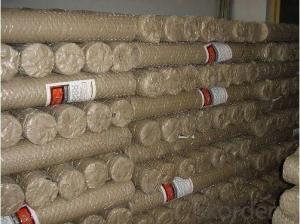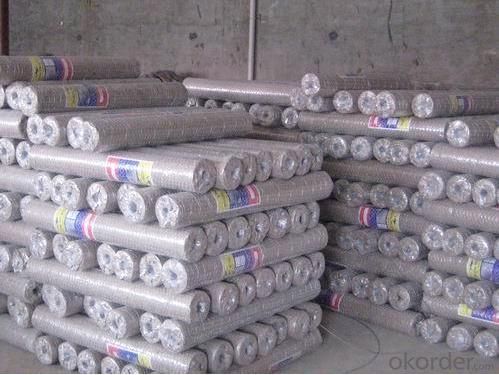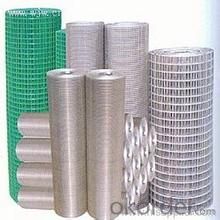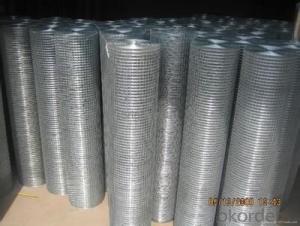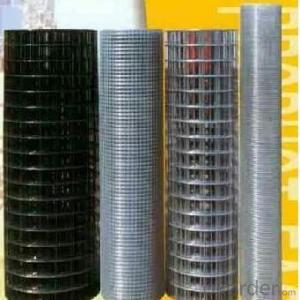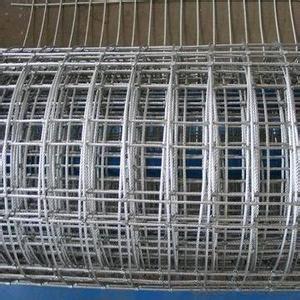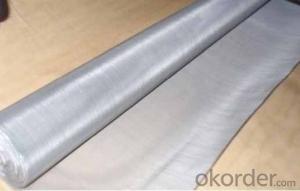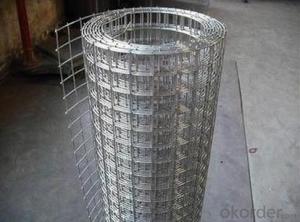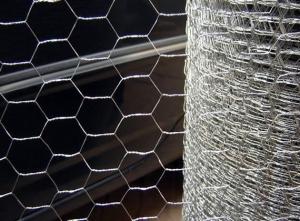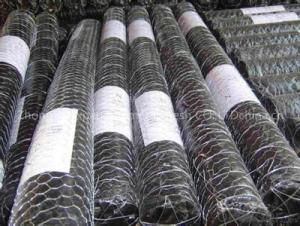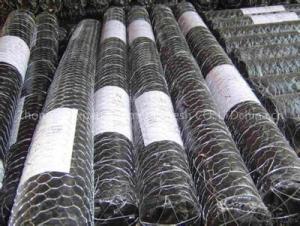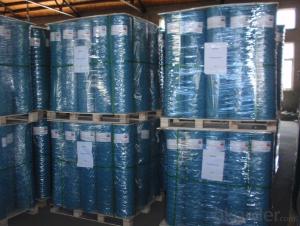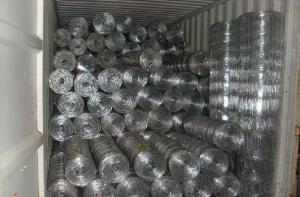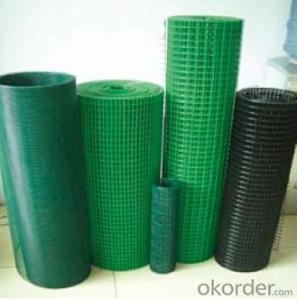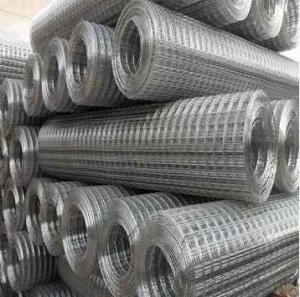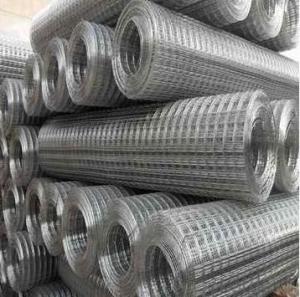Galvanized Hexagonal Wire Netting-1-1/2 Inch
- Loading Port:
- Tianjin
- Payment Terms:
- TT or LC
- Min Order Qty:
- 50 roll
- Supply Capability:
- 5000 roll/month
OKorder Service Pledge
OKorder Financial Service
You Might Also Like
Introduction of Galvanized Hexagonal Wire Mesh
Galvanized Hexagonal Wire Mesh is made of by high quality galvanized wire, Low carton steel wire, stainless steel wire, iron wire, Galvanized steel wire.
Application of Galvanized Hexagonal Wire Mesh
Galvanized Hexagonal Wire Mesh is widely used in industrial and agricultural constructions, Rockwool, fence for poultry cage, fishing cage, playground fence and Christmas decorations
Surface treatment of Galvanized Hexagonal Wire Mesh
a. Black (mild steel wire)
b. Electro galvanized, (galvanized before welding, galvanized after welding)
c. Hot dip galvanized, (galvanized before welding, galvanized after welding)
d. Stainless Steel Wire
Advantage of Galvanized Hexagonal Wire Mesh
Our Galvanized Hexagonal Wire Mesh has strong corrosion-resisting and oxidation-resisting, stable shape, clean ends, good packing with good quality and rock bottom price.
Packing of Galvanized Hexagonal Wire Mesh
1. Waterproof paper then PVC shrinked
2. PVC shrinked only
3. Black waterproof paper only
4. Waterproof paper then metal/wooden pallet
5. Plastic film then carton
(Also as your request. )
Pictures of Galvanized Hexagonal Wire Mesh

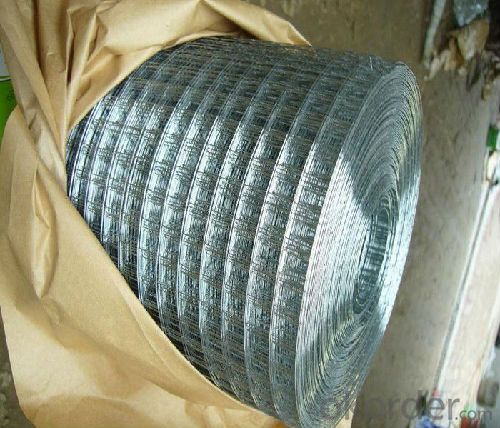
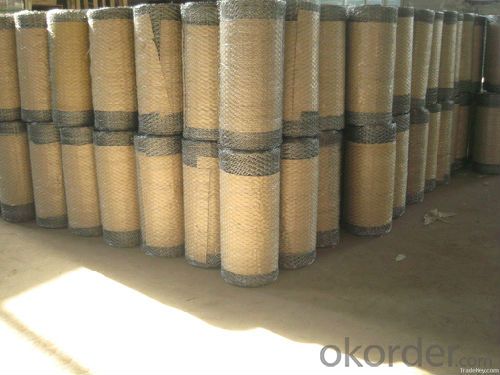
Specification of Galvanized Hexagonal Wire Mesh
Galvanized Hexagonal Wire Mesh-Normal Twist |
| Mesh OpeningWire ThicknessWidthinchmmbwgmminchm3/81027; 26; 25; 24; 230.40-0.6312-480.3-1.21/21327; 26; 25; 24; 23; 22; 21; 200.40-0.8812-800.3-2.05/81627; 26; 25; 24; 23; 22; 21; 200.40-0.8812-480.3-1.23/41927; 26; 25; 24; 23; 22; 21; 200.40-0.8812-800.3-2.012527; 26; 25; 24; 23; 22; 21; 200.40-0.8812-800.3-2.01-1/43024; 23; 22; 21; 20; 19; 180.56-1.2512-480.3-1.21-1/24023; 22; 21; 20; 19; 180.63-1.2512-800.3-2.025023; 22; 21; 20; 19; 18; 170.63-1.4712-800.3-2.037523; 22; 21; 20; 19; 18; 17; 16; 150.63-1.8312-800.3-2.0410016; 15; 14; 13; 121.65-2.7720-1600.5-4.0 |
Galvanized Hexagonal Wire Mesh-Revise Twist |
| Mesh OpeningWire ThicknessWidthinchmmbwgmminchm12525; 24; 23; 22; 21; 20; 19; 180.51-1.2512-800.3-2.01-1/43025; 24; 23; 22; 21; 20; 19; 180.51-1.2512-800.3-2.01-1/24025; 24; 23; 22; 21; 20; 19; 180.51-1.2512-800.3-2.025025; 24; 23; 22; 21; 20; 19; 18; 170.51-1.4712-800.3-2.037523; 22; 21; 20; 19; 18; 170.63-1.4712-800.3-2.0 |
FAQ
We have organized several common questions for our clients,may help you sincerely:
1. How about your company?
A world class manufacturer & supplier of welded wire mesh and is one of the large-scale professional investment Galvanized Hexagonal Wire Mesh bases in China. Annually more than 1000 containers of welded wire mesh are exported to markets in Europe, America and Japan.
2. What is the storage condition?
The Galvanized Hexagonal Wire Mesh should be stored at room temperature and kept from wet and heat source.
3. How to guarantee the quality of the products?
We have established the international advanced quality management system,every link from raw material to final product we have strict quality test;We resolutely put an end to unqualified products flowing into the market. At the same time, we will provide necessary follow-up service assurance.
4. How long can we receive the product after purchase?
In the purchase of product within four working days, we will arrange the factory delivery as soon as possible. The specific time of receiving is related to the state and position of customers. Commonly 7 to 10 working days can be served.
- Q: What are the different mesh opening shapes available in steel wire mesh?
- The different mesh opening shapes available in steel wire mesh include square, rectangular, hexagonal, diamond, and oblong shapes.
- Q: What are the different sizes available for steel wire mesh?
- Steel wire mesh is available in a wide range of sizes to suit different applications and needs. The sizes of steel wire mesh are typically specified in terms of the wire diameter and the mesh opening size. The wire diameter refers to the thickness of the individual wires used to make the mesh. It can range from very thin wires, such as 0.2mm, to thicker wires, such as 5mm or more. The choice of wire diameter depends on the strength and durability required for the specific application. The mesh opening size refers to the distance between adjacent wires in the mesh. It can vary from very fine mesh, such as 0.5mm openings, to larger mesh with openings of several centimeters. The choice of mesh opening size depends on the desired level of visibility, air flow, or filtration required for the application. In addition to the wire diameter and mesh opening size, the overall dimensions of steel wire mesh can also vary. It can be available in standard sheet sizes, such as 4ft x 8ft or 5ft x 10ft, or it can be custom-cut to specific dimensions as per the customer's requirements. Overall, the different sizes available for steel wire mesh provide flexibility and versatility in meeting various industrial, commercial, and residential needs, such as fencing, reinforcing concrete, filtration, animal enclosures, and more.
- Q: How does steel wire mesh perform in terms of resistance to abrasion?
- Steel wire mesh performs exceptionally well in terms of resistance to abrasion. Its strong and durable composition ensures that it can withstand constant rubbing or scraping without experiencing significant wear or damage. This makes it an ideal choice for applications where abrasion resistance is crucial, such as in industrial settings, fencing, filtration systems, and reinforcement structures.
- Q: How is steel wire mesh used in the automotive recycling industry?
- Steel wire mesh is commonly used in the automotive recycling industry for various purposes such as separating different materials, reinforcing structures, and protecting valuable components during the recycling process. It is commonly utilized as a screening material to separate different sizes of shredded materials, ensuring efficient sorting and recovery of recyclable metals. Additionally, steel wire mesh is often used to reinforce concrete structures in automotive recycling facilities, providing enhanced strength and durability. Moreover, it is also utilized as protective barriers or covers to shield valuable components or prevent debris from causing damage during the recycling process.
- Q: How does the installation method affect the overall performance of steel wire mesh?
- The installation method of steel wire mesh can significantly affect its overall performance. Proper installation ensures that the mesh is securely attached and properly tensioned, which enhances its structural integrity and ability to withstand forces such as impact or pressure. Additionally, correct installation techniques minimize the risk of sagging, warping, or distortion, ensuring that the mesh maintains its desired shape and size over time. In contrast, a poorly executed installation may lead to weak points, reduced durability, and compromised functionality of the steel wire mesh.
- Q: What are the different flexibility options available for steel wire mesh?
- Steel wire mesh offers various flexibility options to cater to specific application needs and requirements. 1. Standard Flexibility: Steel wire mesh possesses inherent flexibility, enabling easy molding and shaping to fit different contours and structures. Its standard flexibility makes it suitable for a wide range of applications, including fencing, construction, and reinforcement. 2. Enhanced Flexibility: Manufacturers provide steel wire mesh with improved flexibility properties for applications requiring a higher degree of flexibility. This type of mesh is designed to bend and stretch more effortlessly, making it ideal for conforming to irregular shapes or contours. 3. Rigidity: Conversely, steel wire mesh can also be manufactured with higher rigidity. This type of mesh is less flexible and more resistant to bending or deformation. It finds common use in applications where structural integrity and stability are crucial, such as concrete reinforcement or industrial machinery. 4. Variable Flexibility: Some manufacturers offer steel wire mesh with flexible sections of varying degrees. This allows for greater customization and versatility in specific applications. For instance, a mesh may have a more rigid central section for added strength, while the edges are more flexible for easier installation. 5. Customization: In addition to standard flexibility options, steel wire mesh can be customized to meet specific needs. Manufacturers can adjust wire diameter, spacing, or mesh size to achieve desired flexibility characteristics. This customization ensures that the steel wire mesh is precisely tailored to the application's requirements, delivering optimal performance and functionality. In summary, the available flexibility options for steel wire mesh are diverse, encompassing standard flexibility, enhanced flexibility, rigidity, variable flexibility, and customization. These options allow for the selection of the most suitable mesh type, ensuring optimal performance and functionality for each application.
- Q: What are the cost considerations when using steel wire mesh?
- When using steel wire mesh, there are several cost considerations that need to be taken into account. Firstly, the cost of the steel wire mesh itself is an important factor. The price of steel wire mesh can vary depending on the type of steel used, the size and thickness of the mesh, and the specific requirements of the project. It is important to compare prices from different suppliers to ensure you are getting the best value for your money. Additionally, installation costs should be considered. Steel wire mesh typically requires professional installation, especially for larger or more complex projects. The cost of labor and any necessary equipment should be factored into the overall cost. Maintenance and durability are also important cost considerations. Steel wire mesh is known for its strength and durability, but it may require periodic maintenance to ensure its longevity. This can include cleaning, rust prevention, and repairs if any damage occurs. The cost of these maintenance activities should be taken into account when considering the overall cost of using steel wire mesh. Furthermore, transportation costs should be considered. Steel wire mesh can be heavy and bulky, which may increase transportation costs, especially if the project requires a large quantity of mesh. It is important to factor in the cost of shipping or transporting the mesh to the project site. Lastly, it is worth considering the long-term cost benefits of using steel wire mesh. While the initial cost may be higher compared to other materials, steel wire mesh's durability and strength can result in long-term cost savings. It can reduce the need for frequent replacements or repairs, potentially saving money in the long run. In conclusion, the cost considerations when using steel wire mesh include the price of the mesh itself, installation costs, maintenance and durability, transportation costs, as well as the potential long-term cost benefits. Taking all these factors into account will help in making an informed decision about using steel wire mesh for any project.
- Q: How does the thickness of the steel wire affect the strength of the mesh?
- The thickness of the steel wire plays a significant role in determining the strength of the mesh. Generally, a thicker wire will result in a stronger mesh. This is because a thicker wire has a higher cross-sectional area, which allows it to withstand greater forces and resist deformation or breakage. A thicker wire also provides more stability and rigidity to the mesh structure, making it more resistant to bending, stretching, or sagging. This is especially important in applications where the mesh is subjected to heavy loads or impacts, as a thicker wire can better distribute and absorb the forces, preventing the mesh from failing. Furthermore, a thicker wire can enhance the durability and longevity of the mesh. It is less prone to wear and tear, corrosion, or damage from external factors. This is particularly crucial in harsh environments or outdoor settings, where the mesh is exposed to moisture, chemicals, or extreme temperatures. However, it is important to note that the thickness of the wire should be chosen considering the specific requirements of the application. Using an excessively thick wire may lead to unnecessary weight and cost, while a wire that is too thin might compromise the strength and integrity of the mesh. Therefore, a careful balance between the wire thickness and the intended use of the mesh needs to be achieved to ensure optimal strength and performance.
- Q: Is steel wire mesh resistant to chemicals used in water treatment?
- Generally, steel wire mesh is resistant to the chemicals commonly used in water treatment. It is typically made from stainless steel, which offers excellent chemical resistance. It can resist corrosion and withstand exposure to various chemicals, including chlorine, fluorine, and different acids used in water treatment. Due to this, steel wire mesh is a suitable choice for filtration, separation, and reinforcement in water treatment plants. However, it is important to note that the resistance of the wire mesh to specific chemicals can be influenced by the type and grade of stainless steel used. Therefore, it is advisable to consult the manufacturer or supplier to ensure compatibility with the specific chemicals used in the water treatment process.
- Q: What are the different types of weaves available for steel wire mesh?
- There are several different types of weaves available for steel wire mesh, each serving a specific purpose and offering unique characteristics. Some of the most common types include: 1. Plain Weave: This is the simplest and most common weave pattern, where each wire passes alternately over and under the adjacent wires, creating a strong and durable mesh. 2. Twill Weave: In this weave pattern, each wire passes over two and under two adjacent wires, creating a diagonal pattern. Twill weave offers increased strength and stability compared to plain weave. 3. Dutch Weave: This weave pattern uses thinner wires in the warp direction and thicker wires in the weft direction, resulting in a tighter mesh. Dutch weave is commonly used for filtration applications where a fine and precise filtration is required. 4. Twilled Dutch Weave: Combining the characteristics of twill weave and Dutch weave, this pattern provides excellent strength and filtration capabilities. It has a double layer of warp wires and is commonly used in applications requiring high filtration efficiency. 5. Reverse Dutch Weave: In this weave pattern, the thickest wires are used in the warp direction, while thinner wires are used in the weft direction. This creates a tight weave with small openings, making it suitable for applications that require high strength and fine filtration. 6. Welded Wire Mesh: Instead of weaving, this type of mesh is created by welding intersecting wires together, forming a grid-like pattern. Welded wire mesh offers high strength and stability, making it ideal for applications requiring a rigid structure. These are just a few examples of the different types of weaves available for steel wire mesh. The choice of weave depends on the specific requirements of the application, such as filtration needs, strength, durability, or the desired aesthetic appearance.
Send your message to us
Galvanized Hexagonal Wire Netting-1-1/2 Inch
- Loading Port:
- Tianjin
- Payment Terms:
- TT or LC
- Min Order Qty:
- 50 roll
- Supply Capability:
- 5000 roll/month
OKorder Service Pledge
OKorder Financial Service
Similar products
Hot products
Hot Searches
Related keywords
